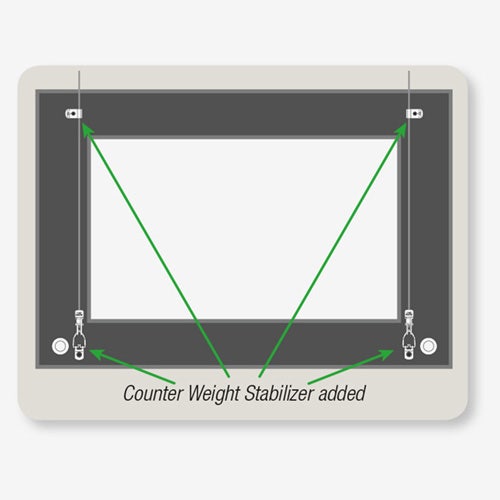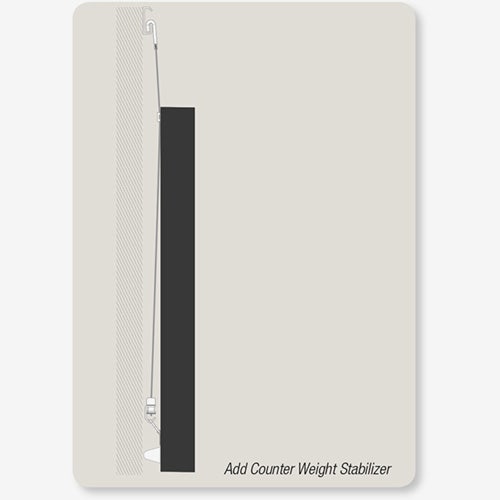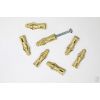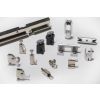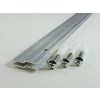Hanging framed art seems straightforward enough, right?
A photograph or art piece, a custom or ready made frame, a nail & hammer. Err ... well, scratch the nail and hammer.
The Problem - Frame Hangs Face Forward
Frames are traditionally prepared with a hang wire on the rear. It is typically mounted to the side rails of frames about 1/3 down from the top of the frame. Also, this wire is traditionally longer than it need be. There is slack in it by some inconsistent amount. When hung from a hanging system cable, or rod, this standard frame preparation will frequently cause the top of the frame to hang away from the wall, what we call face forward.
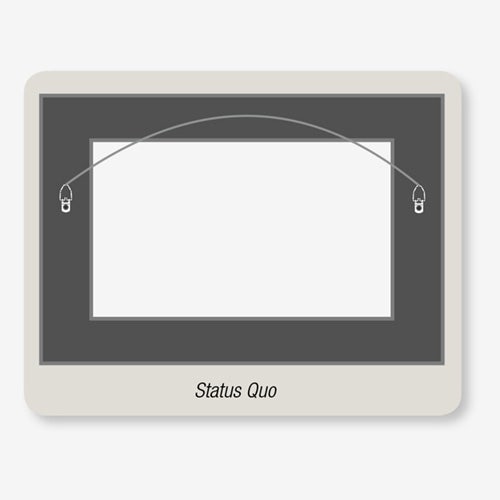
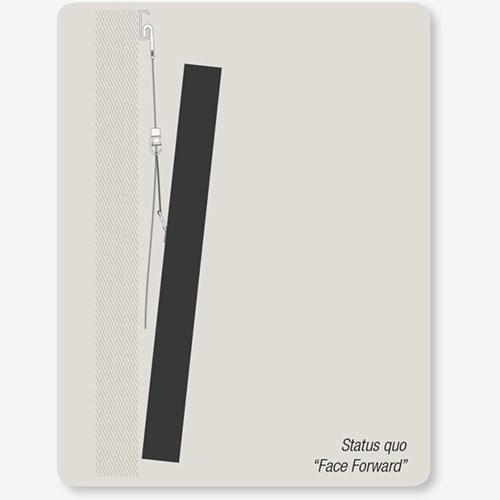
The Solution - Relocate and Tighten Hang Wire
To manage face forward, simply move the hang wire attachment points upward on the frame and while doing so, remove the extra hang wire length. Not sure where to locate the attachments? That depends on the size and weight of the frame. The rule of thumb is that you want to mount these as high as possible on the frame side rails, but just low enough so that the system hook will still be hidden behind the top of the frame. When you support the frame from your finger at the center of the hang wire, the wire should be no closer than 1-1/4" - 1-1/2" from the frame top edge.
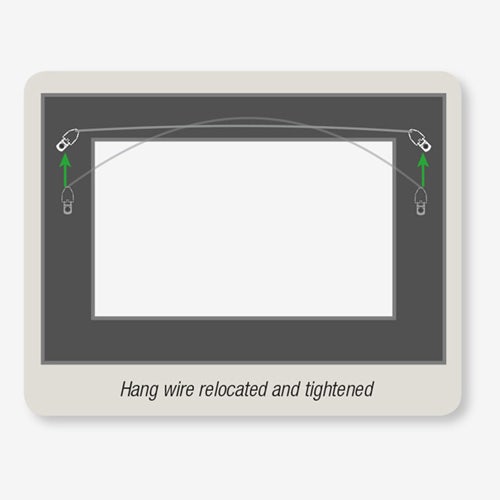
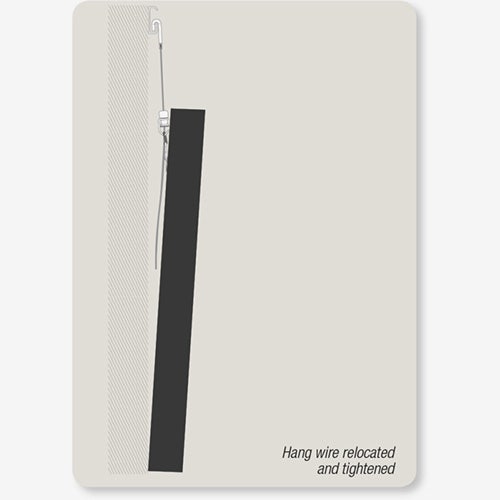
Option 1 - Bumpers
If you prefer, you may also leave the original hang wire in place and simply add a second one for use with hanging systems. This is something progressive custom framers do as a matter of course and a valuable service enhancement for their clients. Once the frame wire has been relocated and tightened, there is one more step that will further enhance the professional presentation. Add a pair of Bumpers, an art hanging hardware, to the rear lower corners of the frame. These act to create a small space between the wall and rear surface of the frame and lessens the face forward dynamic. It also adds a pleasant floating frame effect.
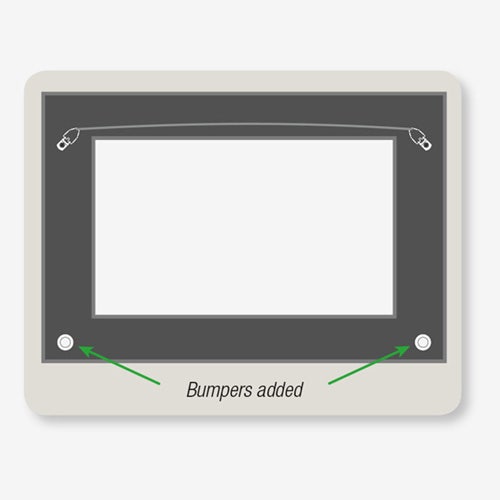
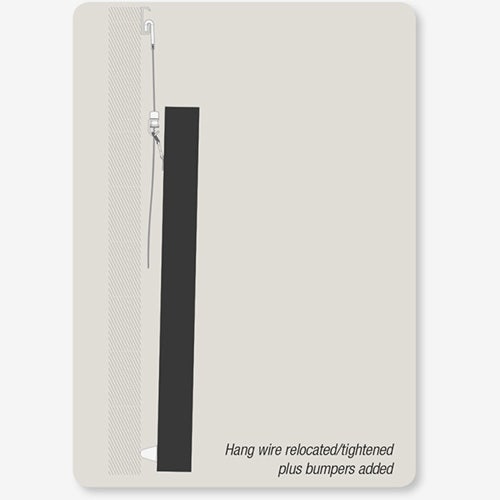
Option 2 - Frame Stabilizer
The nextart hanging hardware to consider is whether your art piece will be hanging from a single cable or rod or two cables/rods. When hanging from one cable or rod, add a Frame Stabilizer behind the frame. This is a device that attaches to the hanging system cable/rod at the bottom rail of the frame. The objective is the same as the bumper, to create a bit of space behind the frame at the lower edge of the frame. However, this action in only appropriate when the art piece is hanging from one cable/rod centered behind the art.
Option 3 - Counter Weight Stabilizer
When hanging from two cables/rods, replace the hang wire on the rear of the frame and install a Counter Weight Stabilizer. This clever device will use the weight of the frame to pull the top edge of the frame towards the wall. It includes the bumpers described earlier.
Note - Bumpers and Frame Stabilizers offer very similar results
Bumpers are less costly but are single use and attach to the rear of the art/frame with adhesives. Frame Stabilizers will last for decades and are infinitely reusable and do not have an impact on the art piece itself. As you can see, regardless of an art piece being framed professionally or otherwise, there is still potential for the top of the frame to lean outward and away from the wall, better known as face forward. By knowing these simple but valuable tips and solutions for managing face forward, the framed art will hang close to the wall, and pleasing to the eye.
Are you experiencing face forward when hanging art? Tell us how these art display installation tips will help you.
If you have questions or would like to learn more about how our products can be beneficial in your project, please contact our Customer Support at info@ashanging.com or give us a call at 866 935-6949 (toll free).
When you hang with AS Hanging Systems, you Hang with the Best®
Hanging art is the differentiator and the ultimate personal touch to one’s home. Nothing speaks more about the occupants, their tastes and preferences, their personality, or speaks to what they value, more than the art they choose to place on the walls of their domicile. Yet, tastes change over time. Values change. Budgets change. The one constant is “change”. The result – changes to displayed art.



